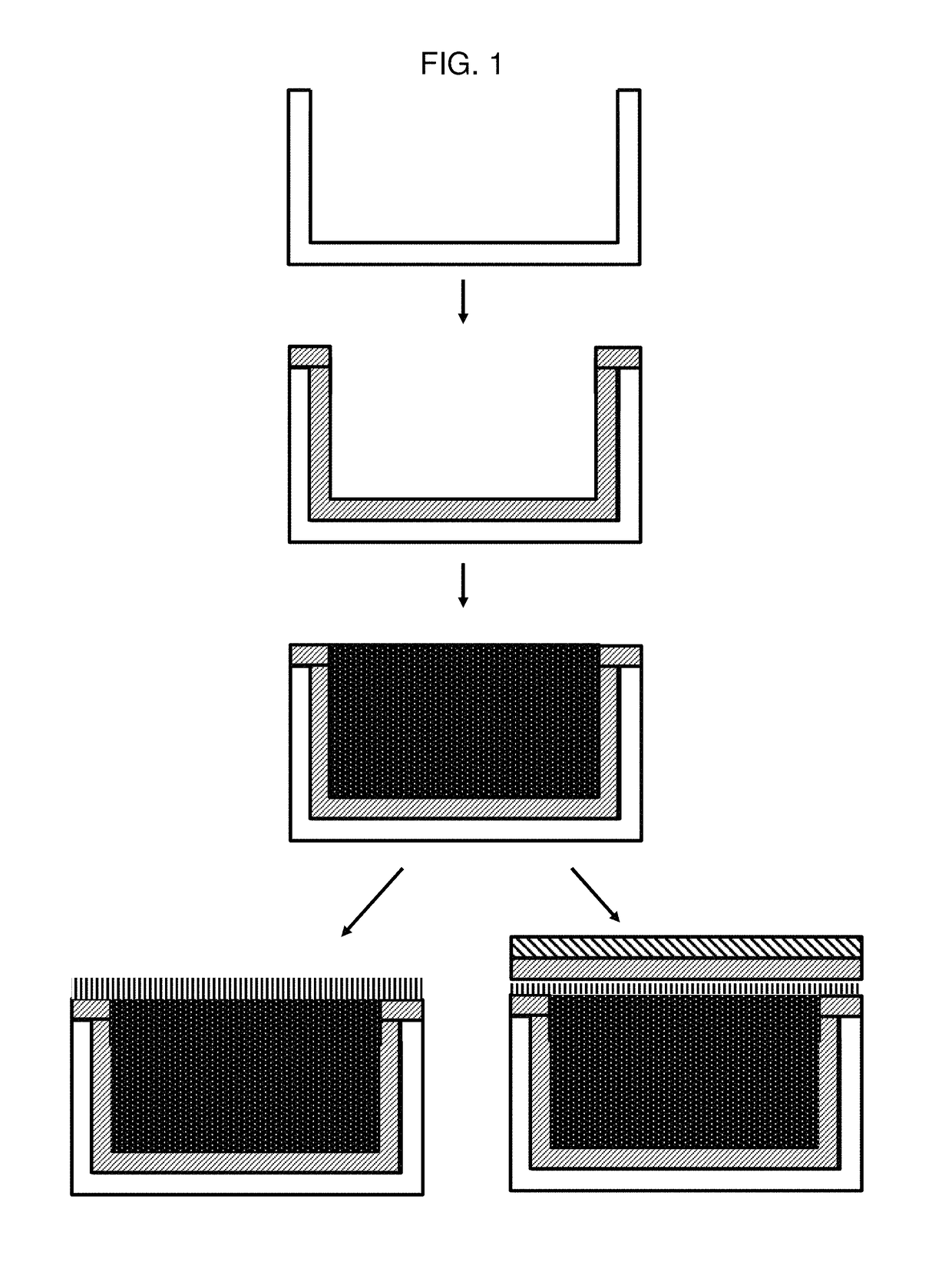Methods for sealing microcell containers with phenethylamine mixtures
a technology of phenethylamine and microcells, applied in the direction of adhesive processes, instruments, optics, etc., can solve the problems of multiple electrophoretic layers located between a single set of addressing electrodes, color cannot be only modulated, and difficulty in achieving uniform color
- Summary
- Abstract
- Description
- Claims
- Application Information
AI Technical Summary
Benefits of technology
Problems solved by technology
Method used
Image
Examples
examples
Adhesion and Color Gamut Measurements in Microcell Devices Sealed with Polydopamine (PDA) and Poly(Vinylpyrrolidone) Mixtures
[0078]Photo-patterned microcell substrates were prepared as discussed with respect to FIGS. 4A- and 4B and cut into strips with dimensions of 5×13 inches. (These microcells are referred to as photopolymer microcells “PP” below.) The microcell strips were plasma treated for 30 seconds with 100 W of 5 sccm 02 at 200 mTorr. After plasma treatment, the strips were curled with microcell openings facing inwards and placed inside a 1 L polypropylene (PP) bottle. A 200 ml solution of 4.76 wt % poly(vinylpyrrolidone) (PVP; 40,000 Mn) in DI H2O was buffered to pH=8.25 with tris(hydroxymethyl)aminomethane (TRIS). Polydopamine (PDA; 400 mg, solid), was added and allowed to dissolve for 1 to 3 min forming a light pink, clear, solution. The PVP / PDA solution was transferred to the 1 L PP bottle containing the microcell strip, sealed, and rolled overnight using a laboratory r...
PUM
| Property | Measurement | Unit |
|---|---|---|
| diameter | aaaaa | aaaaa |
| thickness | aaaaa | aaaaa |
| thickness | aaaaa | aaaaa |
Abstract
Description
Claims
Application Information
 Login to View More
Login to View More - R&D
- Intellectual Property
- Life Sciences
- Materials
- Tech Scout
- Unparalleled Data Quality
- Higher Quality Content
- 60% Fewer Hallucinations
Browse by: Latest US Patents, China's latest patents, Technical Efficacy Thesaurus, Application Domain, Technology Topic, Popular Technical Reports.
© 2025 PatSnap. All rights reserved.Legal|Privacy policy|Modern Slavery Act Transparency Statement|Sitemap|About US| Contact US: help@patsnap.com



